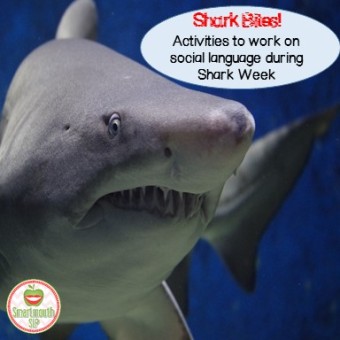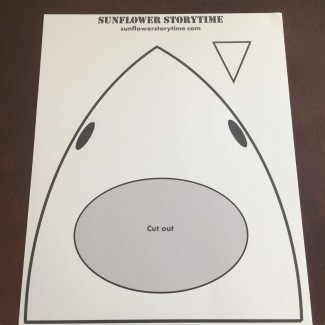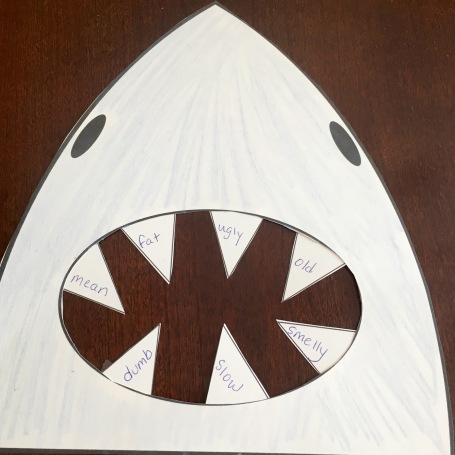
Using a social filter, keeping some thoughts in our heads and saying some thoughts out loud, is a tricky concept for my students. Heck, it’s a tricky concept for most adults these days! It is a social language idea that I circle back to practice with my students. It is not a once and done skill, so I am always looking for different ways to address the idea. I use video clips from movies and commercials, great teaching videos from Everyday Speech, fantastic free activities from Jill Kuzma’s website ,and the teaching materials from Social Thinking .
For my younger students, they need a concrete way to visualize this concept. As with other language concepts, adding a motor component helps my kids to gain another way of connecting and remembering the ideas, rather than just talking about it. Here is a cheap and fun way to add this teaching concept to your therapy closet! I save containers, like the tall oatmeal cylinder boxes. They tend to be sturdier and I like that the plastic top makes it an activity container as well, keeping the cards together when I am not using it.

Make sure the container is empty and clean (you don’t want any buggy friends joining your speech party). I print off blank faces using fabulous clip art that I purchased from Educlips and Sarah Pecorino, as well as rainbow brains from Hidesy’s Clip Art . I have my students draw a face to look like themselves on the blank templates. If fine motor is a concern, you can use googly eyes, stickers or magazine photos cut apart to make a face (or what a great co-treat idea with an Occupational Therapist). If you have the time and a color printer, you can even enlarge and laminate actual pictures of your student’s face for their container. I like the idea of personalizing the faces to help connect the social idea we are using to the students. Once your face is complete, help your students cut out the mouth to make an opening. I cut out the same shape on the side of the box and cut a large slit on the container lid.
Next, after talking through the concept of a social filter, we draw pictures to represent topics or write out scenarios to sort what we should keep in our head (think) vs. what we can say. Then we take turns putting these cards into our brains (top of the box) or into the mouth. I have several of these social filter scenario activity cards, like these , in my TPT store , but you can always make your own! After the activity is done, the cards stay in the box for easy storage.
If we need to focus on just the concept of keeping thoughts in our head (because they might make people upset if we say them out loud), then we can make a cute little brain box out of sugar packet container, with a brain on the front (see picture above). Open the lid to put the thoughts inside the box, without a mouth for them to escape!
What do you use to teach the social concepts to your kids? Share here!



